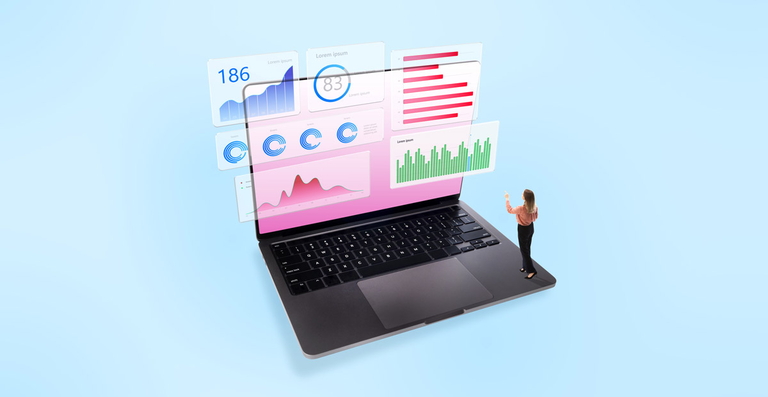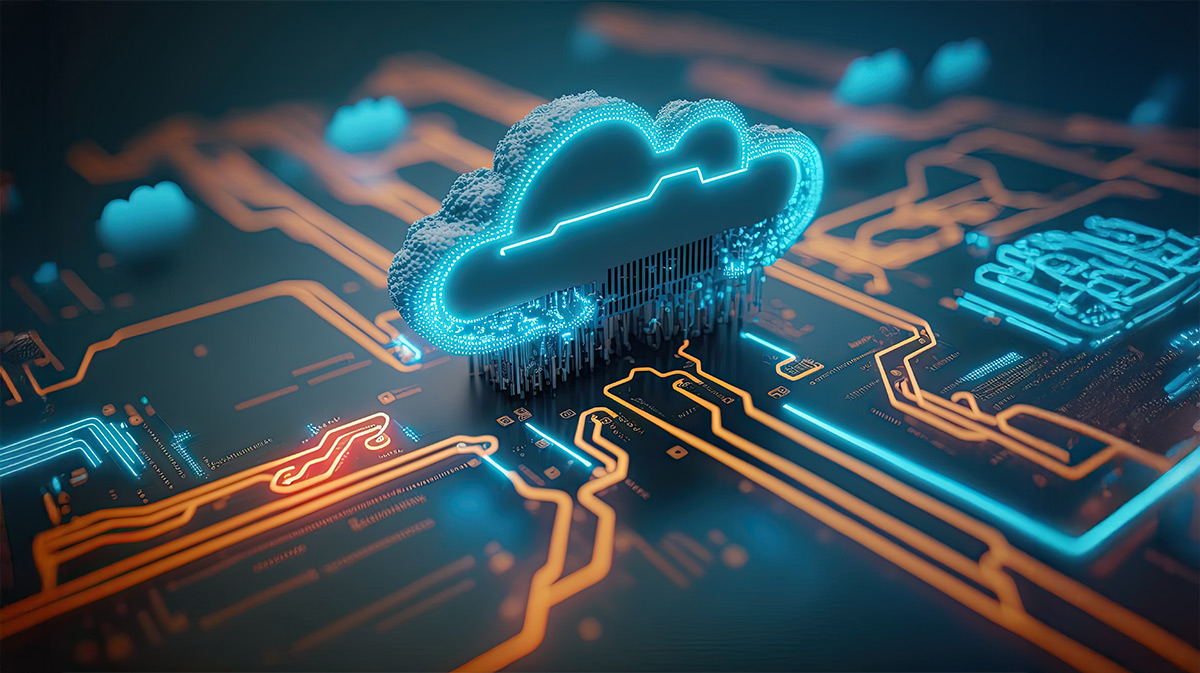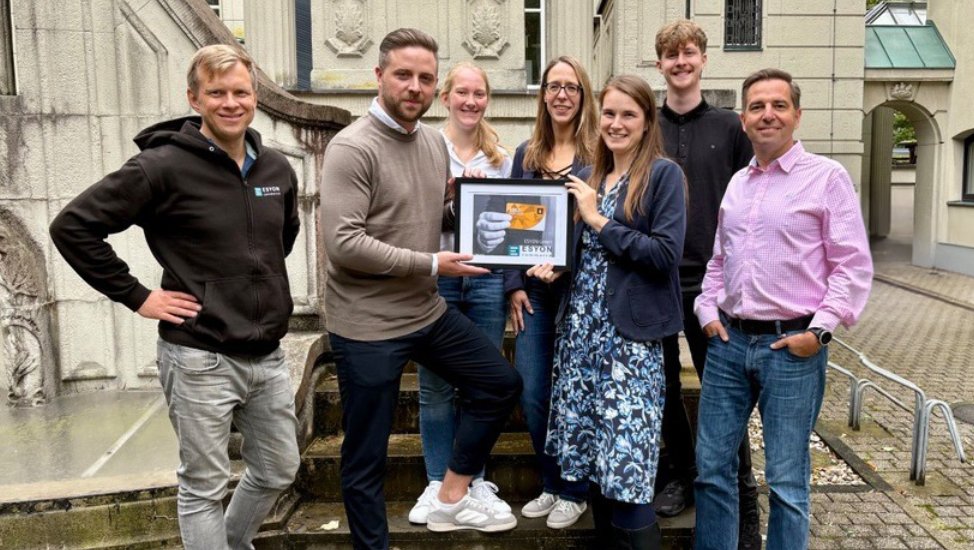You might also be interested in:

Headless Commerce: Flexibility and Innovation for Future-Proof E-Commerce Systems
In traditional e-commerce, the backend and frontend are closely intertwined: content, functions, and design are controlled centrally. While this ensures efficiency, it limits flexibility. Headless commerce separates the frontend – the "head" – from the backend and connects the two via APIs. This allows for flexible operation of various frontends – webshop, app, voice assistant, or digital displays – independently of the backend.
While monolithic (tightly coupled and inflexible) systems often require complex adaptations when the frontend or backend are changed, headless commerce enables a stable backend structure while simultaneously enabling rapid development of the frontends. This accelerates innovation cycles and creates consistent, cross-channel customer experiences.
Headless commerce is ideal for companies that pursue omnichannel strategies, offer personalized user experiences, and want to scale their systems agilely – without having to completely replace existing backend solutions.
More flexibility, more possibilities – these are the advantages
Headless commerce is more than technology – it's a strategic lever for flexible, fast, and customer-centric digital business models. In a dynamic market with rising customer expectations and new touchpoints, systems that can adapt quickly are required.
- Independent front-end development: UX teams can freely shape the design and user experience without back-end restrictions.
- Rapid implementation of campaigns and features: Changes are made without extensive system interventions – ideal for dynamic markets.
- Omnichannel management: Consistent content and functions via APIs for the shop, app, marketplace, and brick-and-mortar stores.
- Performance and scalability: The front and back ends can be individually optimized – perfect for growing and international companies.
- Continuous innovation: Front ends can be iteratively developed, and new technologies can be quickly integrated.
Headless and Omnichannel: a powerful duo
Headless commerce and omnichannel strategies are intertwined. While omnichannel aims to create a consistent, user-centric shopping experience across all channels, headless provides the technical foundation for this.
By separating the frontend and backend, content, functions, and processes can be centrally controlled while being flexibly distributed across different touchpoints—whether it's a website, app, marketplace, or in-store checkout. Product data, shopping carts, or customer profiles can be synchronized across channels without the need for complex, custom solutions.
This creates a modern commerce platform that is agile, adaptable, and future-proof. Headless enables omnichannel concepts to not only be conceived but also implemented efficiently.
This decoupling provides space for continuous development. Frontends can be iteratively improved, new technologies can be easily tested, and, if successful, permanently integrated. This increases future security and innovative strength.
Better loading speed = better conversion
When a user lands on your website, you only have a few seconds to hold their attention. Studies clearly show how strongly page performance influences purchasing behavior:
- 64% of smartphone users expect pages to load in less than four seconds.
- 38% abandon a page if it takes more than three seconds to load.
- 46% won't revisit a website if they've experienced slow loading speeds in the past.
A headless architecture allows you to develop particularly lean and high-performance front ends – independent of the back end. This ensures faster loading times on all devices, thus improving not only the user experience but also conversion rates and revenue. The 2- to 3-second mark is the critical threshold: staying below this time significantly reduces bounce rates.

When headless commerce makes sense for companies and what to consider
Not every company benefits equally from headless commerce. If you only serve one channel or resources are limited, a traditional system may be the better choice.
Questions for initial orientation:
- Are you planning multiple frontends?
- Do you need more flexibility in your customer engagement?
- Are you aiming for rapid international growth?
The transition to headless commerce requires a well-thought-out concept, new interfaces, and coordinated teamwork between IT, marketing, and sales. Initial investments may be higher, but they pay off in the long run through flexibility and scalability. The decision for or against headless commerce can therefore be quite complex – we at ESYON support you in developing the right strategy.
The MACH architecture as a basis
The MACH architecture forms the conceptual and technical foundation of many modern headless commerce solutions. The term stands for four central principles:
- Microservices: Instead of a rigid, monolithic system, MACH relies on loosely coupled services, each of which fulfills a clearly defined task. This allows individual components to be replaced or scaled as needed – without impacting the overall system.
- API-first: All components communicate via standardized interfaces (APIs). This allows for flexible integration with any system such as ERP, PIM, or CMS. The separation between data source and presentation is thus implemented in a technically clean and sustainable manner.
- Cloud-native: MACH systems are specifically developed for use in the cloud. This ensures high scalability, reliability, and continuous availability. New features can be rolled out more quickly without relying on local infrastructure
- Headless: The frontend is not tightly connected to the backend but is an independent part of the architecture. This allows for the development of customized user interfaces that are optimally tailored to the needs of the target group – for web, app, POS, or other channels.
This combination of modularity, openness, and flexibility makes MACH an ideal foundation for future-proof commerce projects. Companies benefit from:
- Faster innovation cycles
- Greater adaptability to market change
- Reduced time-to-market for new features
- Increased resilience through decoupled systems
In short: MACH architecture is not just a technology standard, but a conceptual model for modern, agile enterprise architectures in digital commerce.
With MACH, companies can respond quickly to market changes, drive innovation, and test new business models – without overhauling their entire system.
Practical example: How a fashion retailer grows with headless commerce
Let's imagine a growth-oriented fashion label that has previously sold primarily through a German online shop. Now the company wants to venture into international markets, integrate influencer campaigns directly into its own shopping app, and simultaneously utilize digital sales tools in brick-and-mortar stores.
With a traditional system, each of these steps would require extensive backend customization – time-consuming and costly. The decision was therefore made to implement a headless commerce solution with BigCommerce as the scalable backend. For the frontend, the company relied on a modern, mobile-optimized web application that is perfectly tailored to mobile-first requirements.
BigCommerce's API-first architecture enabled new channels to be connected in a very short time. The marketing department can flexibly test new experiences without tying up IT resources. At the same time, integration with the existing ERP via Microsoft Dynamics 365 enables smooth operations in the background – with centralized data storage and automated processes.
Conclusion: Headless commerce can be used strategically
Headless commerce isn't mandatory, but it's a valuable option for companies with complex requirements, rapid growth, and innovative strategies. ESYON supports you from strategy development through technical implementation to ongoing support – so you can successfully shape your digital transformation.
(Note: This article contains AI-generated content.)
array(8) {
["@type"]=>
string(11) "NewsArticle"
["identifier"]=>
string(17) "#/schema/news/526"
["headline"]=>
string(81) "Headless Commerce: Flexibility and Innovation for Future-Proof E-Commerce Systems"
["datePublished"]=>
string(25) "2025-09-15T17:46:00+02:00"
["url"]=>
string(86) "/news/headless-commerce-flexibility-and-innovation-for-future-proof-e-commerce-systems"
["description"]=>
string(61) "Advantages, challenges and the MACH architecture at a glance."
["author"]=>
array(2) {
["@type"]=>
string(6) "Person"
["name"]=>
string(13) "Steffi Greuel"
}
["image"]=>
array(6) {
["@type"]=>
string(11) "ImageObject"
["caption"]=>
string(0) ""
["contentUrl"]=>
string(54) "/assets/images/p/headless-commerce-d6f8nyw8m33yjke.jpg"
["identifier"]=>
string(51) "#/schema/image/1067869c-923b-11f0-92a9-43671c5cc52e"
["license"]=>
string(0) ""
["name"]=>
string(0) ""
}
}


